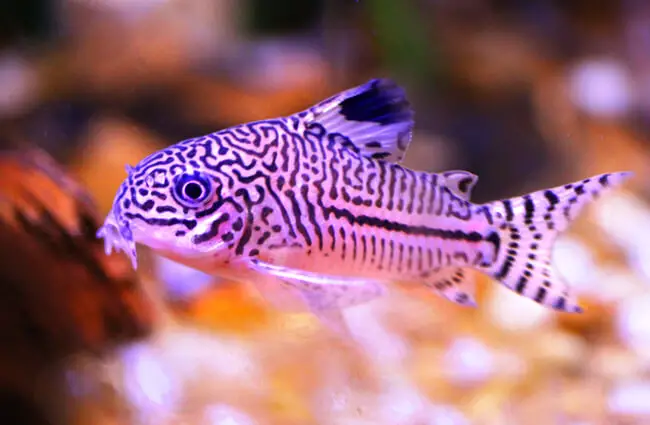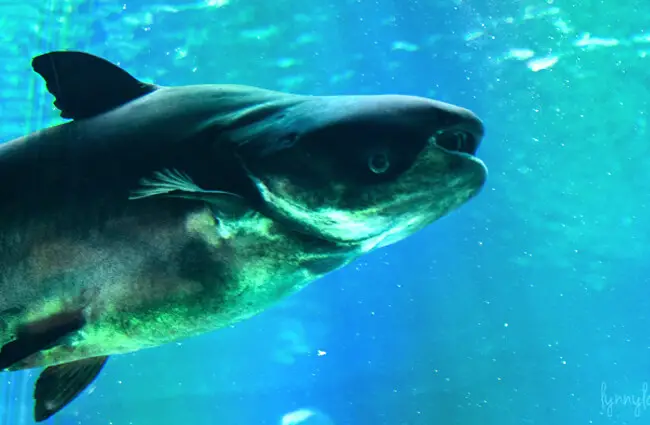Beneath the shimmering surface of countless rivers, lakes, and even some coastal waters worldwide, lurks a creature of remarkable adaptability and ancient lineage: the catfish. Often misunderstood, these fascinating fish are far more than just bottom-dwelling scavengers. They represent an incredibly diverse group, boasting unique sensory organs, varied lifestyles, and a profound impact on their ecosystems and human cultures alike. Prepare to dive deep into the world of catfish, uncovering their secrets from evolutionary origins to their vital role in our planet’s aquatic tapestry.
The Whisker-Wielding Wonders: An Introduction to Catfish
What exactly defines a catfish? The most distinctive feature, and the origin of their common name, are the prominent, whisker-like barbels adorning their mouths. These aren’t just for show; they are highly sensitive chemosensory organs, acting like underwater noses and fingertips, allowing catfish to detect food, navigate, and communicate in murky waters or at night. Unlike most fish, catfish typically lack scales, instead possessing tough, often slimy skin, sometimes protected by bony plates or scutes. This unique combination of features has allowed them to thrive in an astonishing array of environments.
 Mamba :) < https://creativecommons.org/licenses/by/2.0/" />
Mamba :) < https://creativecommons.org/licenses/by/2.0/" />
Global Citizens of the Aquatic World
Catfish are truly global citizens, inhabiting every continent except Antarctica. While predominantly freshwater dwellers, some species have adapted to brackish and even marine environments. Their habitats range from fast-flowing mountain streams to stagnant ponds, vast rivers, and deep lakes. This incredible distribution speaks volumes about their evolutionary success and adaptability.
A Diet as Diverse as Their Habitats
The popular image of a catfish as a bottom-feeding scavenger is only part of the story. While many do consume detritus, insects, and small invertebrates found on the substrate, the dietary habits of catfish are incredibly varied. Some are voracious predators, ambushing other fish or even small mammals and birds. Others are filter feeders, sifting plankton from the water, while some are herbivores, grazing on aquatic vegetation. This dietary flexibility is a key factor in their widespread success.
Intriguing Facts About Catfish
- Ancient Lineage: Catfish have a long evolutionary history, with fossils dating back over 60 million years.
- Size Extremes: They range from tiny species just a few centimeters long to giants like the Mekong giant catfish, which can exceed 3 meters (10 feet) and weigh hundreds of kilograms.
- Electric Defenders: Some species, like the electric catfish of Africa, can generate powerful electric shocks for defense and stunning prey.
- Venomous Spines: Many catfish possess sharp, venomous spines in their dorsal and pectoral fins, used for defense against predators.
- Air Breathers: Certain catfish can breathe atmospheric air, allowing them to survive in oxygen-depleted waters or even move short distances over land.
Diving Deeper: The Biology and Ecology of Catfish
For the aspiring zoologist or the dedicated animal lover, understanding the intricate details of catfish biology reveals a creature of profound complexity and ecological significance.
Diversity and Classification
The order Siluriformes, encompassing all catfish, is one of the most diverse groups of vertebrates, comprising over 3,000 known species across 35 families. This vast array includes familiar species like channel catfish and blue catfish in North America, the exotic Giraffe Catfish from the Nile, and the tiny, often colorful Corydoras catfish popular in aquariums.

Physical Characteristics and Adaptations
Beyond the barbels and scaleless skin, catfish exhibit a suite of adaptations. Their bodies are often elongated and streamlined, though some are flattened or even eel-like. The adipose fin, a small, fleshy fin located between the dorsal and caudal fins, is present in many species. Their mouths can be terminal (at the end of the snout), subterminal (underslung), or superior (upturned), reflecting their feeding strategies. Many possess a Weberian apparatus, a series of small bones connecting the swim bladder to the inner ear, enhancing their hearing sensitivity. The venomous spines, while defensive, can cause painful wounds to humans, so caution is always advised when handling them.

Habitat and Distribution: A Global Reach
Catfish dominate freshwater ecosystems across the globe. South America and Africa are particular hotspots for catfish diversity, hosting numerous endemic families. In North America, species like the Channel Catfish (Ictalurus punctatus) and Blue Catfish (Ictalurus furcatus) are iconic river inhabitants. Their ability to tolerate a wide range of water conditions, including varying temperatures, oxygen levels, and turbidity, contributes to their ubiquitous presence. Some marine species, such as the hardhead catfish, are found in coastal estuaries and even open ocean environments, showcasing their remarkable physiological plasticity.
Diet and Feeding Strategies
The feeding habits of catfish are a testament to their opportunistic nature.
- Omnivores: Many common species, like the Channel Catfish, are omnivorous, consuming insects, crustaceans, smaller fish, plant matter, and detritus.
- Carnivores: Larger species, such as the Wels Catfish (Silurus glanis) of Europe or the Piraíba (Brachyplatystoma filamentosum) of the Amazon, are apex predators, preying on other fish, amphibians, reptiles, and even birds and small mammals that venture too close to the water’s edge.
- Filter Feeders: Some specialized species, like the planktivorous catfish of the genus Limanda, filter microscopic organisms from the water column.
- Parasites: The infamous Candiru (Vandellia cirrhosa) of the Amazon is a parasitic catfish, known for its ability to enter the gills of larger fish and feed on blood.
Mating and Reproduction: A Spectrum of Strategies
Catfish exhibit a wide range of reproductive strategies, from simple egg-laying to complex parental care.
- Nest Builders: Many species, particularly in temperate regions, are nest builders. Males often construct depressions in the substrate, guard the eggs, and protect the fry after hatching.
- Mouthbrooders: Some species, especially in Africa, are mouthbrooders, where one parent (often the male) carries the eggs and sometimes the young in its mouth for protection until they are able to fend for themselves.
- External Fertilization: Fertilization is typically external, with females laying thousands of sticky eggs that are then fertilized by the male.
- Sexual Maturity: Catfish generally reach sexual maturity within a few years, depending on the species and environmental conditions.
Evolutionary History
The evolutionary journey of catfish began in the Cretaceous period, over 60 million years ago. Their ancient origins are reflected in their widespread distribution and the basal characteristics they retain. Early catfish likely evolved in Gondwanan supercontinent freshwater systems, explaining their presence across South America, Africa, and Asia. Key evolutionary innovations, such as the development of barbels for chemoreception and the loss of scales for increased tactile sensitivity, allowed them to exploit niches unavailable to other fish, particularly in low-light or turbid environments. Their robust body plans and diverse feeding apparatuses further cemented their evolutionary success.
Ecosystem Contribution and Interaction with Other Animals
Catfish play crucial roles in their ecosystems:
- Scavengers and Decomposers: By consuming detritus and carrion, many catfish help to clean aquatic environments and recycle nutrients.
- Predators: As predators, they help regulate populations of smaller fish, invertebrates, and even amphibians, contributing to ecosystem balance.
- Prey: Younger and smaller catfish serve as a food source for larger fish, birds, reptiles, and mammals, forming an integral part of the food web.
- Bioindicators: Their presence and health can indicate the overall health of an aquatic ecosystem.
- Symbiotic Relationships: Some smaller catfish species may engage in commensal relationships, living alongside larger fish without harm, or even parasitic ones, as seen with the Candiru.

Catfish and Humanity: From Plate to Pond
The relationship between humans and catfish is long and multifaceted, spanning culinary traditions, recreational pursuits, and conservation efforts.
Finding Catfish in the Wild: Tips for Animal Lovers and Hikers
For those eager to observe catfish in their natural habitat, understanding their behavior is key.
- Where to Look: Focus on freshwater environments like rivers, lakes, and large ponds. Look for areas with submerged structures, fallen logs, undercut banks, or dense vegetation, which provide cover.
- When to Look: Many catfish species are nocturnal, meaning they are most active at night. Dawn and dusk can also be productive times for observation.
- How to Observe: Use a flashlight with a red filter at night to minimize disturbance. Remain quiet and still. In clear waters, snorkeling or diving can offer incredible views.
- Safety First: Be aware of your surroundings, especially near water. If you encounter a catfish, observe from a respectful distance. Remember that many have defensive spines.
Encountering Catfish in the Wild: What to Do
If you happen upon a catfish, whether while fishing or simply exploring:
- Observe, Do Not Disturb: Appreciate the animal from a distance. Avoid touching or harassing it.
- Handle with Care (if necessary): If you are fishing and catch a catfish, handle it gently and release it quickly if not keeping it. Use gloves to protect yourself from their spines, which can deliver a painful sting.
- Respect Their Habitat: Do not leave trash or introduce foreign substances into the water.
Catfish in Captivity: A Zookeeper’s Guide
Caring for catfish in a captive environment requires specific knowledge and dedication.
- Habitat Replication: Recreate their natural environment as closely as possible. This includes appropriate substrate (sand or fine gravel), hiding places (driftwood, rocks, PVC pipes), and suitable water parameters (temperature, pH, hardness) specific to the species.
- Water Quality: Catfish are sensitive to water quality. Regular water changes, robust filtration, and monitoring of ammonia, nitrite, and nitrate levels are crucial.
- Diet: Provide a varied diet appropriate for the species. Many captive catfish thrive on high-quality sinking pellets, supplemented with live or frozen foods like bloodworms, brine shrimp, earthworms, and chopped fish. For larger predatory species, whole fish or large invertebrates may be necessary.
- Tank Mates: Choose tank mates carefully. Some catfish are solitary and territorial, while others are schooling. Ensure tank mates are not small enough to be eaten and are compatible with the catfish’s temperament.
- Enrichment: Provide environmental enrichment through varied substrate, hiding spots, and occasional changes to tank decor to stimulate natural behaviors.
- Avoid:
- Overfeeding, which leads to poor water quality.
- Incompatible tank mates that could be preyed upon or cause stress.
- Sudden changes in water parameters.
- Handling without protection, due to their venomous spines.
Catfish’s Contribution to Human Culture
Catfish have woven themselves into the fabric of human societies across the globe.
- Food Source: Catfish are a highly valued food fish worldwide. Aquaculture of species like the Channel Catfish has become a major industry, providing sustainable protein. Fried catfish, grilled catfish, and catfish stews are culinary staples in many regions.
- Recreational Fishing: Anglers pursue catfish with passion, drawn by their fighting spirit and impressive size. Catfish tournaments are popular events.
- Aquarium Trade: Many smaller, often colorful, catfish species (e.g., Corydoras, Plecos) are popular in the aquarium hobby.
- Folklore and Symbolism: In some cultures, catfish appear in folklore, often associated with strength, resilience, or the mysteries of the deep.
- Conservation: Due to overfishing, habitat loss, and pollution, some large catfish species, like the Mekong Giant Catfish, are critically endangered, highlighting the need for robust conservation efforts.

The Enduring Legacy of the Whisker-Wielders
From the smallest armored cory to the colossal Mekong giant, catfish represent an extraordinary triumph of evolution. Their unique adaptations, diverse lifestyles, and critical ecological roles make them indispensable components of aquatic ecosystems. Whether admired by an aspiring zoologist, sought by an angler, or savored at the dinner table, the catfish continues to captivate and sustain. Understanding these remarkable fish is not just about appreciating their individual wonders, but also about recognizing the intricate connections that bind all life in our planet’s watery realms. Their story is a powerful reminder of nature’s ingenuity and the importance of preserving the health of our freshwater and marine environments for generations to come.


![Red Angus Closeup of a beautiful Red Angus cowPhoto by: U.S. Department of Agriculture [pubic domain]https://creativecommons.org/licenses/by/2.0/](https://animals.net/wp-content/uploads/2020/03/Red-Angus-4-238x178.jpg)




![Red Angus Closeup of a beautiful Red Angus cowPhoto by: U.S. Department of Agriculture [pubic domain]https://creativecommons.org/licenses/by/2.0/](https://animals.net/wp-content/uploads/2020/03/Red-Angus-4-100x75.jpg)

